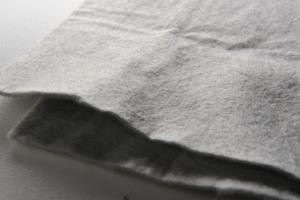
Geotextiles
Geotextiles are permeable fabrics which, when used in association with soil, have the ability to separate, filter, reinforce, protect, or drain.
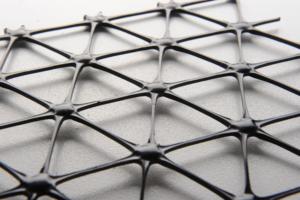
Geogrids
A geogrid is geosynthetic material used to reinforce soils and similar materials. Geogrids are commonly used to reinforce retaining walls, as well as subbases or subsoils below roads or structures. Soils pull apart under tension. Compared to soil, geogrids are strong in tension.
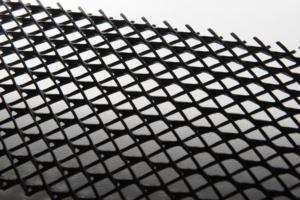
Geonets
A geonet is a geosynthetic material consisting of integrally connected parallel sets of ribs overlying similar sets at various angles for in-plane drainage of liquids or gases. Geonets are often laminated with geotextiles on one or both surfaces and are then referred to as drainage geocomposites.
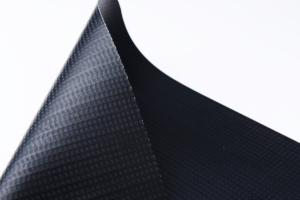
Geomembranes
Geomembranes are continuous flexible sheets manufactured from one or more synthetic materials. They are relatively impermeable and are used as liners for fluid or gas containment and as vapour barriers.
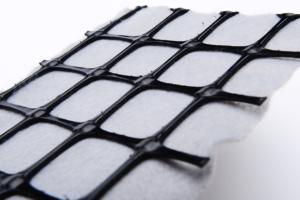
Geocomposites
Geocomposites are geosynthetics made from a combination of two or more geosynthetic types. Examples include: geotextile-geonet; geotextile-geogrid; geonetgeomembrane; or a geosynthetic clay liner (GCL). Prefabricated geocomposite drains or prefabricated vertical drains (PVDs) are formed by a plastic drainage core surrounded by a geotextile filter.
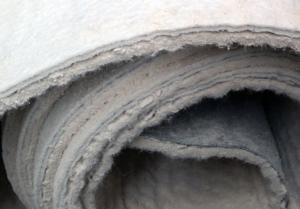
Geosynthetic Clay Liners (GCLs)
Geosynthetic clay liners (GCLs) are geocomposites that are prefabricated with a bentonite clay layer typically incorporated between a top and bottom geotextile layer or geotextile bentonite bonded to a geomembrane or single layer of geotextile. Geotextile-encased GCLs are often stitched or needlepunched through the bentonite core to increase internal shear resistance. When hydrated they are effective as a barrier for liquid or gas and are commonly used in landfill liner applications often in conjunction with a geomembrane.
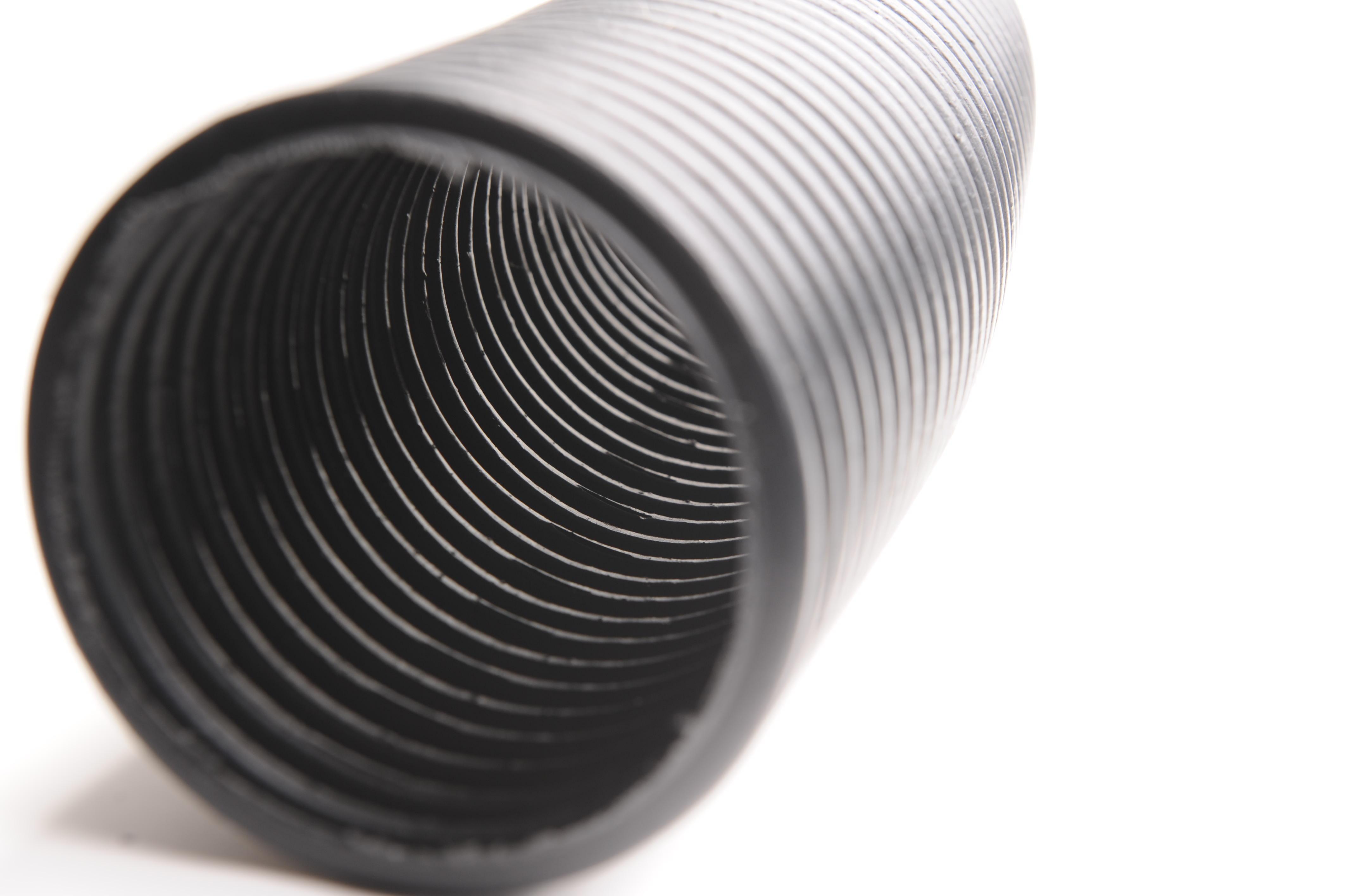
Geopipes
Geopipes are perforated or solid-wall polymeric pipes used for drainage of liquids or gas (including leachate or gas collection in landfill applications). In some cases the perforated pipe is wrapped with a geotextile filter.

Geocells
Geocells are relatively thick, three-dimensional networks constructed from strips of polymeric sheet. The strips are joined together to form interconnected cells that are infilled with soil and sometimes concrete. In some cases 0.5 m to 1 m wide strips of polyolefin geogrids have been linked together with vertical polymeric rods used to form deep geocell layers called geomattresses.
Geosynthetics include a variety of synthetic polymer materials that are specially fabricated
to be used in geotechnical, geoenvironmental, hydraulic and transportation engineering
applications. It is convenient to identify the primary function of a geosynthetic as being
one of: separation, filtration, drainage, reinforcement, fluid/gas containment, or erosion
control. In some cases the geosynthetic may serve dual functions.
Separation
The geosynthetic acts to separate two layers of soil that have different particle size distributions. For example, geotextiles are used to prevent road base
materials from penetrating into soft underlying soft subgrade soils, thus maintaining design thickness and roadway integrity. Separators also help to prevent finegrained subgrade soils from being pumped into permeable granular road bases.
Filtration
The geosynthetic acts similar to a sand filter by allowing water to move through the soil while retaining all upstream soil particles. For example, geotextiles are used to prevent soils from migrating into drainage aggregate or pipes while maintaining flow through the system. Geotextiles are also used below rip rap and other armour materials in coastal and river bank protection systems to prevent soil erosion.
Drainage
The geosynthetic acts as a drain to carry fluid flows through less permeable soils. For example, geotextiles are used to dissipate pore water pressures at the base of roadway embankments. For higher flows, geocomposite drains have been developed. These materials have been used as pavement edge drains, slope interceptor drains, and abutment and retaining wall drains.
Prefabricated vertical drains (PVDs) have been used to accelerate consolidation of soft cohesive foundation soils below embankments and preload fills.
Reinforcement
The geosynthetic acts as a reinforcement element within a soil mass or in combination with the soil to produce a composite that has improved strength and
deformation properties over the unreinforced soil. For example, geotextiles and geogrids are used to add tensile strength to a soil mass in order to create vertical or nearvertical changes in grade (reinforced soil walls).
Reinforcement enables embankments to be constructed over very soft foundations and to build embankment side slopes at steeper angles than would be possible with unreinforced soil. Geosynthetics (usually geogrids) have also been used to bridge over voids that may develop below load bearing granular layers (roads and railways) or below cover systems in landfill applications.
Fluid/Gas Containment
Fluid/Gas (barrier) containment: The geosynthetic acts as a relatively impermeable barrier to fluids or gases. For example, geomembranes, thin film geotextile composites, geosynthetic clay liners (GCLs) and field-coated geotextiles are used as fluid barriers to impede flow of liquid or gas. This function is also used in asphalt pavement overlays, encapsulation of swelling soils and waste containment.
Erosion Control
The geosynthetic acts to reduce soil erosion caused by rainfall impact and surface water runoff. For example, temporary geosynthetic blankets and permanent lightweight geosynthetic mats are placed over the otherwise exposed soil surface on slopes. Geotextile silt fences are used to remove suspended particles from
sediment-laden runoff water. Some erosion control mats are manufactured using biodegradable wood fibres.
Other Functions
Geotextiles are also used in other applications. For example, they are used for asphalt pavement reinforcement and as cushion layers to prevent puncture of geomembranes (by reducing point contact stresses) from stones in the adjacent soil, waste or drainage aggregate during installation and while in service. Geotextiles have been used as daily covers to prevent dispersal of loose waste by wind or birds at the working surface of municipal solid waste landfills. Geotextiles have also been used for flexible concrete formworks and for sandbags. Cylindrical geotubes are manufactured from double layers of geotextiles that are filled with hydraulic fill to create shoreline embankments or to dewater sludge.

